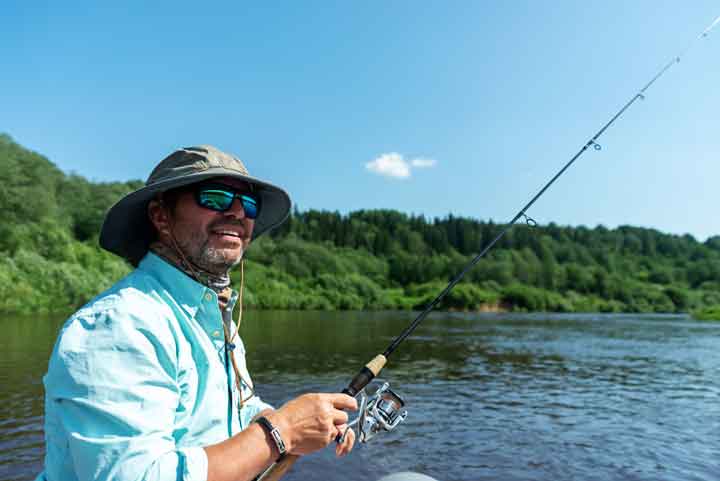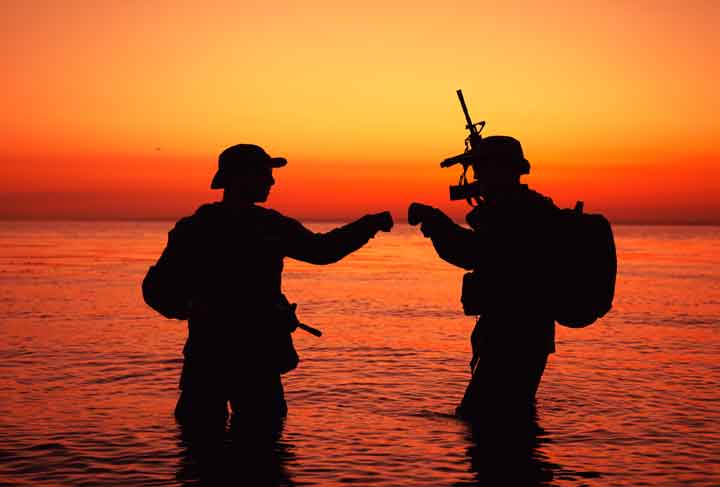I grew up in the city, never imagining why someone would want to live out in the weather and eat things like bear meat. Then I joined the military, where I learned how to tie slip knots, to use weapons, and later took survival courses where I acquired backcountry skills.
Everything changed after that, and I’ve learned a lot—even about outdoor clothing—but it was hard to find the best hat.
So I set off to hunt down the answer.
Let’s Start with the Boonie Hat and the Bucket Hat
You might be asking, “Why only Boonies and Buckets?” People wear all sorts of hats for hunting, fishing, and outdoor activities. There are baseball-style caps, bomber hats, trapper hats, beanies, and watch caps.
Well, as with other information on my website, I investigate what works for particular outdoor and survival and hunting situations, analyze their performance, and report my findings and opinions.
I’ve written a lot about clothing and best practices for their use on outdoor adventures. I thought it was time to give the hat its chance to be discovered. I admit I decided to begin with the ones I like best.
The Classic Bucket Hat
The bucket hat was developed around 1900 for use as a farmer’s or fisherman’s hat and was a wool version of the original hat, which was waterproof due to the natural lanolin in the material. These hats protected farmers and fishermen from sun and rain.
In WWII, a cotton or denim version was a standard issue for the U.S. Navy, particularly in hot climates. By the 1960s, the bucket hat had evolved into a fashion statement—and they are still going strong today.
This hat comes with a lot of history, and some of it is still what people think of when they’re considering buying one. It runs the gamut from vintage to kitschy to practical, with trendy thrown in for good measure.

Military Daisy Mae
Remember Gilligan’s Island? And the squashed and wrinkled denim hat that Gilligan wore? That’s a Daisy Mae. It was first developed in denim and twill and issued in WWII by the U.S. Navy.
Johnny Jeeps
The term Johnny Jeeps was used in a Life Magazine article in 1942. The article showcased the iconic military bucket hat as a new fashion trend and dubbed it “Johnny Jeep” after the military use of the hat.
Fishing Hat
From its early recognition as an Irish farming and fishing hat, the bucket hat still has a following among many who consider it a fishing hat. Where else would you keep your flies?
Irish Walking Hats
The original Irish tweed hat is still in style and many consider it to be an Irish Walking Hat.
Session Hat
Starting in the 1960s, a version of the bucket hat became a wild trend, with outsize crowns to accommodate bouffant hairdos with the oversized floppy brims.
Following that period, the biggest evolution of the bucket hat comes from the fashion trend that began in the 1980s and 1990s with its adoption by hip hop artists and fans. Today it’s known as a session hat and is still considered a very cool, hot fashion trend.
Why Are Bucket Hats Called Bucket Hats?
While not easy to pin down, the use of the term “bucket hat” evolved from its origins as an Irish farmer’s hat up and through today’s casual use as a fashion and outdoor beach item. It’s thought that its name derives from the shape, which resembles an upside-down bucket.
Why is the Bucket Hat so Popular?

The bucket hat is truly for everyone. Whether playing golf, hanging out with friends at the beach, playing sports, or just looking good, it works. Over time, it has become a useful accessory and a well-recognized fashion statement.
The bucket hat as streetwear gained popularity in the 1980s and 1990s with the hip hop movement and was worn by artists such as LL Cool J and Run DMC. Today they are still popular with rap artists and their fans and are produced by urban wear retailers.
Do Bucket Hats Protect from the Sun?
Yes, they do but for most designs not as much as a Boonie hat. They offer 360° shade which helps protect your entire head. Of course, they also provide protection against glare which is good for the eyes.
Some more modern styles have an expanded brim, which adds to the shade factor. Other styles have an expanded shape designed for sun protection. Companies have developed specific fabrics for bucket hats with a rating of UPF 30 or above, which qualifies them for the Skin Cancer Foundation’s seal of recommendation.
There are two types of sun protection products that we use most commonly, sunscreens and clothing. They each have a unique sunlight filtering function and designation.
UPF means Ultraviolet Protection Factor, and applies solely to fabrics and designates the level of ultraviolet light that can penetrate the material. The more familiar SPF means Sun Protection Factor and is a measure of the amount of time it takes for exposure to the sun to burn your skin.
What are the Holes in Bucket Hats For?
While many styles today do not have holes, there are designs made for active lifestyles to provide ventilation. Particularly in the warmer months, keeping cool while out in the sun is critical to avoid heatstroke. The holes in the hat help keep the head cooler and evaporate sweat.
Boonie Hats Are Useful
During the Vietnam War, the U.S. Army Green Berets and the 5th Special Forces Group began wearing the new style along with the Australian troops and the Army of the Republic of Vietnam. They’ve evolved considerably from there.

Sun and Glare Protection
Even if you don’t have sensitive skin, being outdoors can quickly result in sunburn. According to the American Cancer Society, a hat is an essential element for covering as much skin as possible to help avoid sunburn, eye damage, and skin cancer.
The Boonie hat with its wide brim provides enhanced sun protection coverage and shade for your eyes.
Best Rain Hats
Let’s face it—being outside in all weather conditions means more than likely you’re going to get wet. You can buy protective gear such as rain jackets, pants, and boots in a wide range of protective factors ranging from simple nylon to fully waterproof. The same goes for rain hats.
A prime consideration for a rain hat is whether it keeps the rain from running down the inside of the back of your jacket while you’re hunting, hiking, or fishing. With the Boonie hat’s wide brim, you lessen the odds of your rain hat keeping your head dry while being a sluice for water down your back.
The Boonie dries fast and comes in many types of fabrics including cotton, cotton/polyester blends, and nylon/cotton.
Bug Protection
There is nothing like spring fishing, especially with the first chance to be outdoors when the season finally opens after a long winter. When I set off for my yearly spring fishing trip, the smell of the new foliage of the earth and the sun on my face is so invigorating that it lifts my spirits.
Then I have to deal with the bugs. Depending on where you live, spring bugs can be horrendous, and fishing spots seem to be one of the top spots where they like to hang out. I have friends that fish in Maine in spring and they have told me stories about black fly swarms that are harrowing. They have to go on their trips wearing bug nets that are shirts they wear over their clothing, and hats with bug nets too.
Since black flies are particularly adept at aiming for the neck and ears, it’s almost impossible to avoid them with a regular hat. Mosquitoes have their own annoying practices too, and have no problem finding open skin no matter where it is. This is where the Boonie wins the battle. The unique large brim comes into play again with the addition of bug netting. That means no DEET on the face. Nice for your skin, and for the environment!
Boonie or Bucket?
So far, I’ve tried both of these hat designs and they seem to get the job done pretty well. I have to confess I’m partial to the boonie, probably because of its connection to my military career, but I have to say that I’ve rocked a bucket a time or two on a camping trip.
What I can tell you is that I’ve stayed pretty dry with the Boonie, and neither of them has let me down for sun protection. They both pack well and dry quickly when they’re wet.
So, more than the “cool factor,” staying comfortable and dry in any weather is important in outdoor life so the better prepared you are for weather, including rain and sun exposure, the safer you’ll be.




